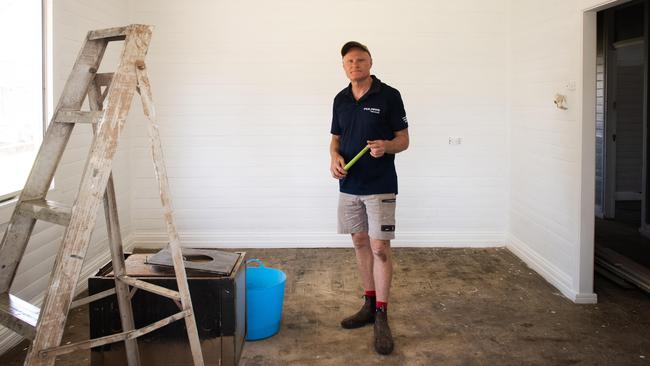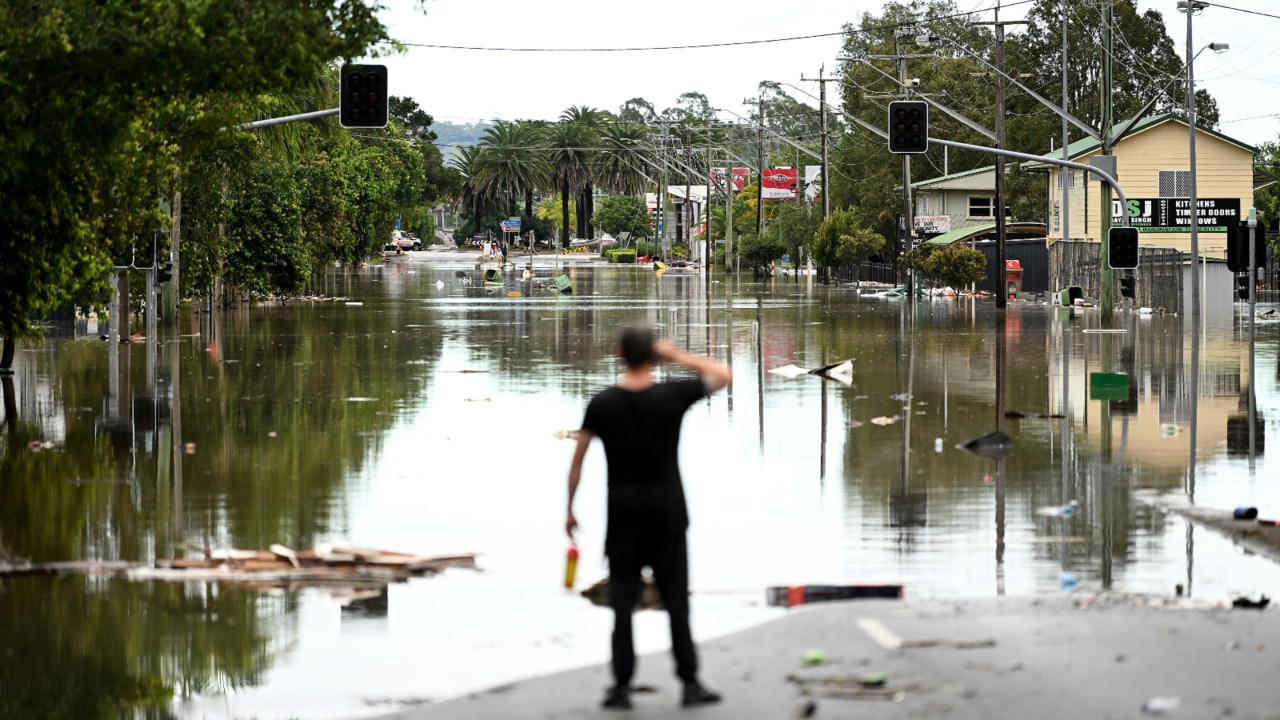Hope floats for Lismore flood zone’s real estate
The sun is shining and the sound of hammers and drills echo down the empty residential streets of South Lismore.

The sun is shining and the sound of hammers and drills echo down the empty residential streets of South Lismore. Flags bearing a single faded red heart, a sign of solidarity and survival after February’s record-breaking flood, still hang from peeling verandas and busted window frames. Here and there Christmas decorations flap in the breeze.
Many of these raised timber and tin homes are still abandoned – some residents who almost drowned in their beds or flooded ceiling cavities have vowed they’ll never return. Other houses have been restored or are being coaxed back to life.
And in almost every street, “for sale” signs stand as a symbol of loss – and opportunity.
Here in one of the most flood-prone urban centres in Australia, where discussions are underway to permanently move residents out of high risk streets, the wheels of real estate are still turning.
People are selling. But who’s buying?
“It’s people who are thinking about the future,’’ says real estate agent and Lismore City Councillor Andrew Gordon, who has snapped up his own flood-affected investment property in Casino St, one of the South Lismore strips that transformed into a raging river on February 28, inundating houses up to their roofs.
In this suburb alone, nine homes were destroyed and 592 suffered severe or major impact in the February flood.
“People are taking a risk now in the hope that somewhere down the line they have a commodity that will become valuable and a resource that provides for the community,” Gordon says.
It’s cheap to buy in – homes are about half their pre-flood value and many are offered as is, stripped out shells – and yields are high. Renovated flood-affected properties are back on the market for $450-$530 per week.

And while government departments work with owners on voluntary buybacks and talk of a planned process to depopulate the flood plain, people who can’t afford to wait, or think they won’t get inundated again, are simply moving back in, future floods be damned.
For $150,000, Gordon considers his new investment a good buy. The three-bedroom timber home on 4000sq m flooded midway up its windows despite being raised to 13m, slightly above the 12.7m one-in-100 flood level. He’ll spend another $75,000 renovating it before offering it for rent after Christmas.
“People have called me a disaster capitalist,’’ Gordon says. “But this house will provide accommodation for someone who needs it and it gives my wife and I an opportunity to self-fund our retirement; that’s what we are working towards. I am taking the risk here.”
Risk is a burning question in Lismore, which was built on the convergence of two rivers that regularly flood the town centre and surrounding suburbs, nicknamed the bowl or the wok.
The February 28 flood peaked at a record 14.4m; a month later, another flood reached 11.4m. According to the council, the probable maximum flood level for Lismore has been modelled at 16-16.5m.
And it has noted that “rising temperatures are predicted to significantly increase the likelihood of more frequent and heavier rain events leading to more frequent and severe flooding.”
For investors like Gordon, it’s a percentages game. “This (the February 28 flood) was an unnatural event of epic proportions. While some might say we have climate change and this is going to become more prevalent, there is nothing to say that is true,’’ he says.
“I’m working on the odds that it might not happen again in my lifetime or for many, many years.’’ He quickly concedes: “Of course, I might be eating humble pie this time next year.”
Neil Scott, from Ray White Lismore, says at last count 130 flood-affected homes had been offered for sale, with about 70 selling in the average range of $150,000 to $350,000, though some have gone higher. A vacant block of land in the flood plain went for about $90,000
“A mixture of people are buying in,’’ he says, ticking off investors, parents helping their kids into the housing market, owner occupiers. “In reality, as time goes by, people think ‘let’s get on with it’.’’
Banks are lending under certain criteria, he says, and houses that were inundated were still being insured for as little as $4000 a year.
Andrew Hall, chief executive of the Insurance Council of Australia and a member of the Northern Rivers Reconstruction Corporation’s advisory board, says he’s surprised flood cover would be available at that price because the risk was obvious.
“That South and North Lismore area, that’s the area that’s so exposed and dangerous to be living in, as the last flood proved. I don’t think they have a long-term opportunity here.”
It’s a sentiment David Witherdin, the head of the Northern Rivers Reconstruction Corporation, agrees with. “For new owners buying in, it is cheap for a reason. You set yourself up for a future of repetitive emotional and economic traumas because you are living in a high hazard area. We really discourage people from living there,’’ he says.
Witherdin is overseeing the $800m Resilient Homes Program that will help 2000 homeowners in high-risk areas on the Northern Rivers raise or retrofit their houses, if deemed safe, or have their homes in the flood-impact zone bought back by the government.
He says that people who buy post-flood won’t be eligible for these options and he warns that anyone selling property on the flood plain now could be missing out on a voluntary government purchase based on pre-flood valuations.
“I would encourage anybody who may be eligible for a voluntary purchase, or are interested in selling, to wait for the outcome of our assessment process. They could be losing out on hundreds of thousands of dollars,’’ he says.
Lismore City Mayor Steve Krieg says things can’t go back to how they were before February’s flood. “The reality is we had 250 civilians in their own boats who saved over 4000 peoples’ lives that day. As a community and a country, we can’t forget how bad this disaster was.’’





To join the conversation, please log in. Don't have an account? Register
Join the conversation, you are commenting as Logout